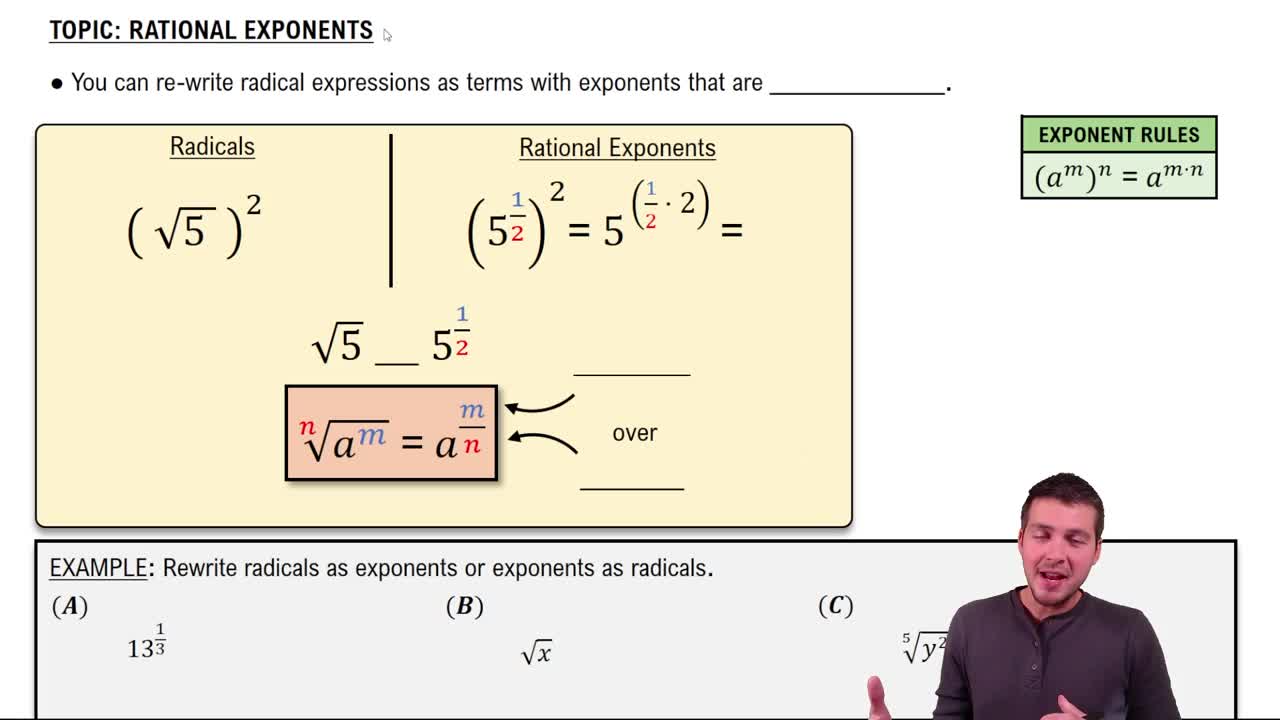Here are the essential concepts you must grasp in order to answer the question correctly.
Radical Expressions
Radical expressions involve roots, such as square roots or cube roots, represented by the radical symbol (√). In this context, we are dealing with fifth roots, denoted as ⁵√. Understanding how to manipulate these expressions, including simplifying them and applying properties of exponents, is crucial for solving problems involving radicals.
Recommended video:
Radical Expressions with Fractions
Properties of Exponents
The properties of exponents govern how to simplify expressions involving powers and roots. Key properties include the product of powers (a^m * a^n = a^(m+n)) and the quotient of powers (a^m / a^n = a^(m-n)). These rules are essential when simplifying radical expressions, as they allow for the combination and reduction of terms under the radical.
Recommended video:
Simplifying Radicals
Simplifying radicals involves reducing the expression to its simplest form, which often includes factoring out perfect squares, cubes, or higher powers. For example, when simplifying ⁵√(64x^6), recognizing that 64 is a perfect fifth power (2^6) and x^6 can be expressed as (x^5)(x) helps in breaking down the expression. This process is vital for obtaining a clearer and more manageable form of the radical.
Recommended video:
Adding & Subtracting Unlike Radicals by Simplifying
 Verified step by step guidance
Verified step by step guidance Verified Solution
Verified Solution

